An adventure cruise into the Peruvian Amazon
A small-ship expedition cruise in the biodiverse waterways of the Peruvian Amazon blends wildlife encounters with next-level pampering and award-winning cuisine.
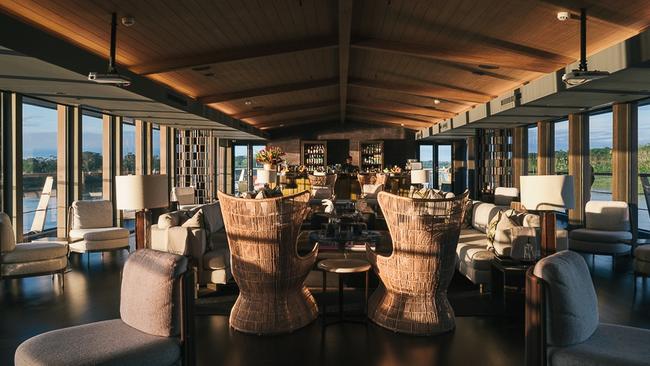
“Look to your right – a group of dolphins!” says guide Alex Gutierrez. Spinning around, I’m able to capture a few shots on my camera as a quad of grey river dolphins vanish beneath the coffee-coloured water. Too fast, I think, settling back onto our speedboat exploring the Marañón River, one of the tributaries flowing into the mighty Amazon. “Down the river – there, there, there!” Gutierrez cries out a few moments later. “It’s a pink dolphin.” Pivoting in the opposite direction, I watch a blush dorsal fin slip below the surface. Catching a frame of the famous pink boto and the smaller tucuxi dolphin will be harder than I imagined. Still, it’s an auspicious start to our three-night cruise on the Aqua Nera.
My father and I, as well as two dozen other shipmates, arrived at Iquitos the previous afternoon after a short flight from Lima. Iquitos is Peru’s bustling gateway to the Amazon, and an ebullient group of guides and porters are on hand to greet us. Our destination is at the end of a blisteringly fast drive to the embarkation point in Nauta. “Don’t worry, only the birds fly where we’re going next,” jokes guide Julio Mozombite as we soar over potholes. The dusty road is one of only a handful out of Iquitos. It’s a region completely cut off by land from the rest of the country. Here, the Amazon doubles as a watery roadway.

Spanning four levels, and stretching 62 metres, the Aqua Nera is a dashing presence. The clap of drums and twang of a guitar greets our arrival. Our spacious suite – there are 20 in total – is appealingly decorated in earthy tones and natural fibres. The ship is the perfect size for a cruise. Intimate enough to learn everyone’s name in short order, but capacious enough to get lost with a book in one of many nooks. The ship is equipped with a spa, gym, screening room, sun deck, restaurant, plunge pool, and a lounge with engulfing leather furniture. A round of Camu Camu Sours in the bar, an Amazonian riff on a Pisco Sour, strikes a jubilant note.
The following day, we arrive at the Pacaya Samiria National Reserve, one of the world’s biodiversity hotspots, and board skiffs to explore its emerald and sapphire riverlands. There are only two seasons in the Amazon – high water and low – and our visit is timed with the end of the former in May. Rows of fence post-thick trees along the riverbanks bear a distinct bleach-white line where the water reached its zenith – a good three metres higher than now. Fortunately, there are plenty of hidden flooded forests for us to explore.
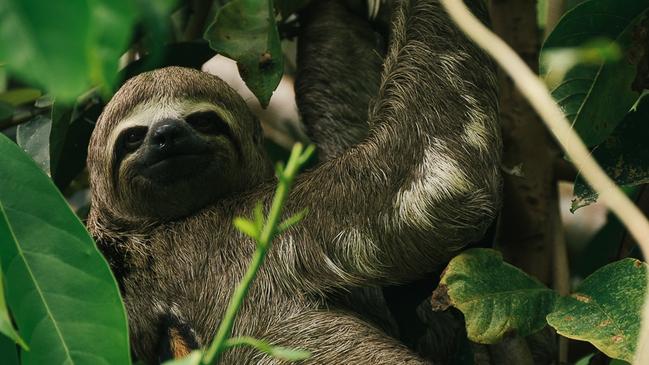
A three-toed sloth, drenched from morning rain, is hanging out to dry in the branches of a spindly cecropia tree – one of its favourite foods. Spying just one sloth is a treat, but we spot several more as we venture deeper along the tributary. Mozombite points out a dizzying variety of fauna: there are termite and ant nests, black-collared hawks, two kinds of kingfishers, sleeping bats clinging to a tree and endless flocks of snowy egrets. When the boat nears, there’s a beautiful synchronicity to their flight as they launch into the sky with powerful strokes of their ivory wings. Inside a darkened section of canopy, a trio of noisy night monkeys peeks out of a tree burrow. Comically stacked on top of the other, they appear to pose for the clack-clack of cameras furiously snapping away.
Further down the tributary, we catch up to another of our skiffs in time to watch the ship’s medic, Moises, dip an arm into a group of lily pads and pull out a writhing juvenile anaconda. While the baby snake is fascinating to admire up close, its skin marbled in olive- and mustard-hued scales, I’m not sure I’d want to interact with its elder siblings. As the sun makes its way behind the canopy, and then plunges below the horizon, our guides turn on spotlights in search of nocturnal creatures. Their beams illuminate in succession a hand-sized tarantula, great potoos, more monkeys and a juvenile caiman – a Jungle Book of sightings. There’s an undeniable thrill in witnessing a wild animal in its natural habitat.
After a day exploring in sweltering heat and humidity, the ship’s central air-conditioning is a blessing. A hot shower in the obsidian-tiled shower, a fresh set of clothes, and I feel like a new man. The Aqua Nera makes regular expeditions along the Amazon River, and our voyage has an extra measure of culinary spice care of acclaimed chef Pedro Miguel Schiaffino. For the last 20 years he’s built a reputation by bringing Amazonian cuisine to a wider audience: first with a series of restaurants in Lima, and by collaborating with Aqua Expeditions. In fact, 70 per cent of the ingredients served on board are sourced directly from the rainforest.
Meals are served family-style, and tonight’s dinner is a tasty snapshot of the region’s wonders. My father and I share bites of sweet mashed plantains with smoky local sausage and chalaquita, a Peruvian salsa. There’s bread with Brazil nut oil, chicken cooked with palm fruit, and sweet roasted peppers underscoring a fillet of local paiche, the massive river fish whose resurgence is an Amazonian success story. Once endangered, its numbers have rebounded over the past decade through conservation efforts and it remains an important source of food for local communities. Sated, we drift back to our rooms.
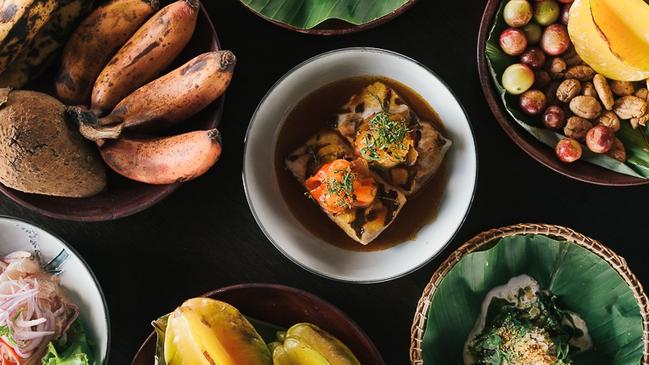
Next morning, I wake to the spectacular sight of pink and orange clouds suspended above the canopy, and the raucous sound of insects and birds trumpeting their morning chorus. Overnight we’ve sailed deeper into the reserve. As we jet down a tributary, our guides continue to highlight the abundant wildlife. There are squirrel monkeys leaping from branch to branch, more egrets gracefully taking to the air and kingfishers whizzing low above the river. One sloth has climbed down so low to the shore its “grin” is visible without aid from binocular or camera lens. I can’t help snap a hundred photos as it inquisitively looks on.
All four skiffs take turns unloading onto a muddy landing, and it’s our first time stepping foot into the jungle. Machete in hand, an Amazonian community guide clears any creeping growth along our path, while our naturalists banter about stragglers being left behind for the jaguars. Still, it’s the mosquitoes that present the greater nuisance. Long clothing and strong insect repellent are essential. Ahead, Schiaffino is marching along in muddy boots, pausing occasionally to inspect mushrooms, berries or a vine. “Taste this,” he says, offering a circular leaf. After a slight crunch, a zesty citrus and ginger flavour coats my mouth. Our guide brings us to a towering tree, its roots splayed like the spokes of a wheel. There are scant animal sightings along the trail, but the sense of being somewhere primordial under the canopy is overwhelming nonetheless.
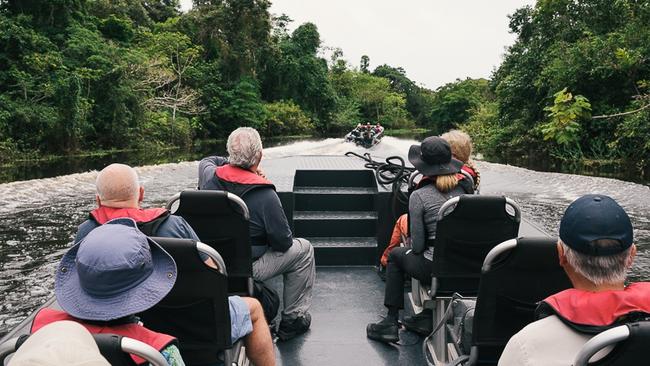
Heading downriver towards a shady overhang, we’re greeted by the intrepid kitchen team with lunch. There are plantains and fruit, but the star is rice, chicken and egg steamed in bijao leaves – the Amazonian version of a picnic. The remainder of our afternoon is spent searching for more wildlife. The squawks of brightly coloured macaws lead us to a group of them perched high in the canopy. We pass by an Amazonian community, and several of us hop into dugout canoes for a ride down a tranquil waterway. My oarsman, eight-year-old Tommy, paddles along with uncommon ease underneath giant cumulus clouds.
Our cruise has brought us deep into Pacaya Samiria, where the Ucayali and Marañón rivers collide to form one of the largest river systems in the world. The morning is spent bobbing for one of Hollywood’s favourite terrors – the piranha. Six different bamboo rods splash around the water to attract the toothy fish, as well as hooks baited with chunks of steak. Minutes later my father is pulling up a line dangling an inch-long fish. Its bite-sized teeth confirm the species, but its diminutive scale sets me to laughing. There’s a definitive irony in using $20 of steak to catch $2 worth of fish, but we continue to pull up fish after fish.

Later, we escape the sun for lunch back on the ship – this time paiche served as ceviche enlivened with onion, lime, salt and chilli. Our last afternoon is spent in one of the local fishing communities on the Amazon. Most of our guides grew up in similar villages along the river. The houses are simple, wooden structures with a basic kitchen and platform beds. Some are raised to protect from high water surges. Many of the on-board guests have brought pencils and colouring books for the children, who eagerly swoop them up with smiles.
“This is similar to many of our villages,” says Mozombite as we pass by banana trees, cacao, mango, and other tropical plants. “When I was 13, I moved to Iquitos, learned English from a Canadian non-profit at school, and worked in hotels for many years before becoming a guide. You take what you’ve learned from the community, the knowledge of the land, and help educate tourists who come to visit.” Thanks to Mozombite and the Aqua Nera crew our voyage has been nothing short of revelatory, a window into the Amazon through its food, wildlife and people.
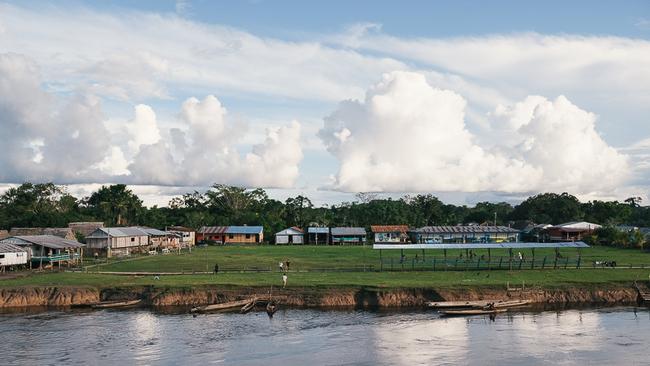
The writer travelled as a guest of Aqua Expeditions. A three-night itinerary on board Aqua Nera starts at around $7,000 per person, double occupancy. aquaexpeditions.com

To join the conversation, please log in. Don't have an account? Register
Join the conversation, you are commenting as Logout